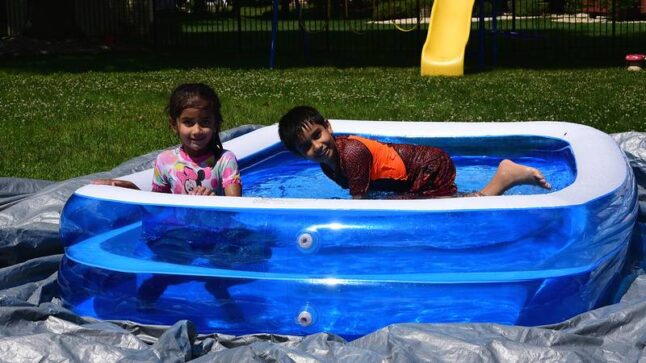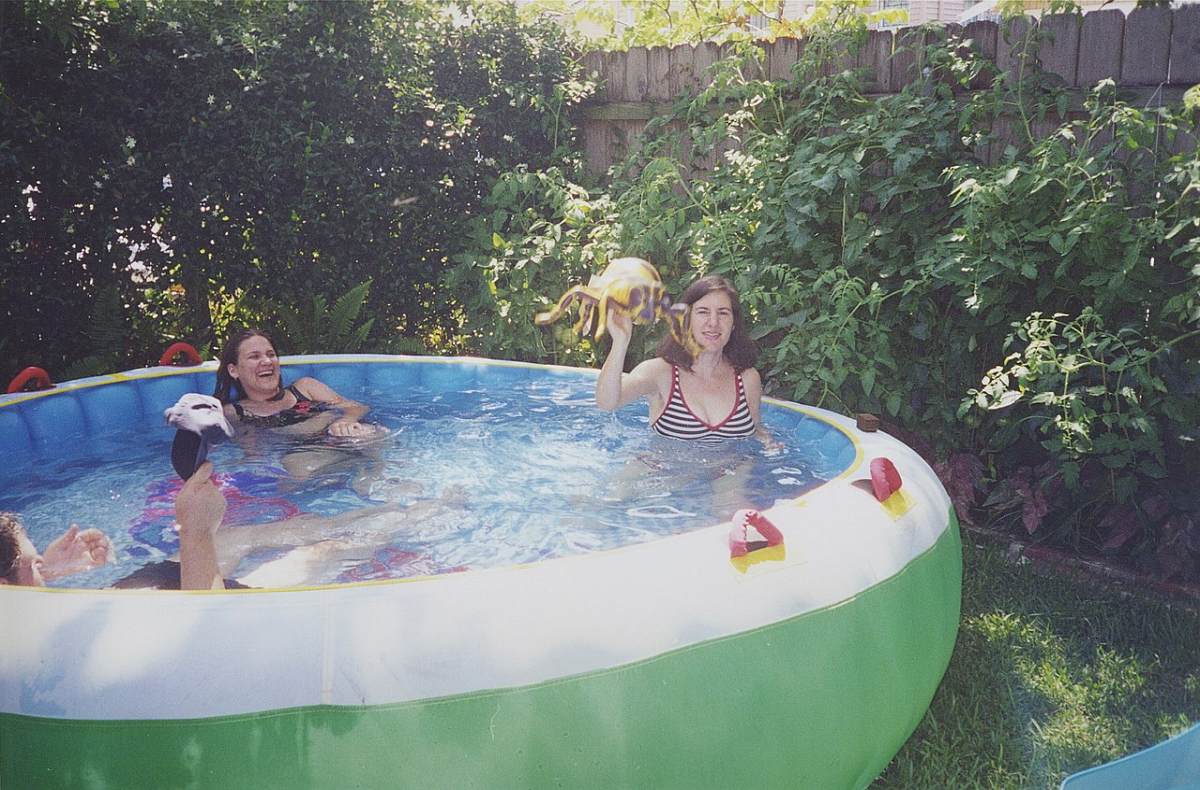
Your family has decided on an inflatable pool in the backyard for summer fun. But now you’re concerned about how to protect your grass. You are right to be worried about a big piece of plastic sitting on your lawn in the summertime. Unless you are willing to drain or move the inflatable pool every day or two, your grass will be damaged, if not killed.
You’ll find a lot of online articles that give you several ideas on how to protect the lawn. But these suggestions often offer more than they deliver. For example, some suggest placing a ground cover underneath the pool to protect the grass. However, these ground covers are intended to protect the pool, not the grass..
This article debunks many common suggestions on how to protect grass from an inflatable pool and offers a couple of sure things. As a bonus, you’ll find how to repair the grass when these suggestions fail.
Protect Grass from an Inflatable Pool – The Right Way
No doubt about it, an inflatable pool filled with water left on the lawn all summer will kill the grass. But here are two options that can help prevent the grass from turning brown.
Option No. 1
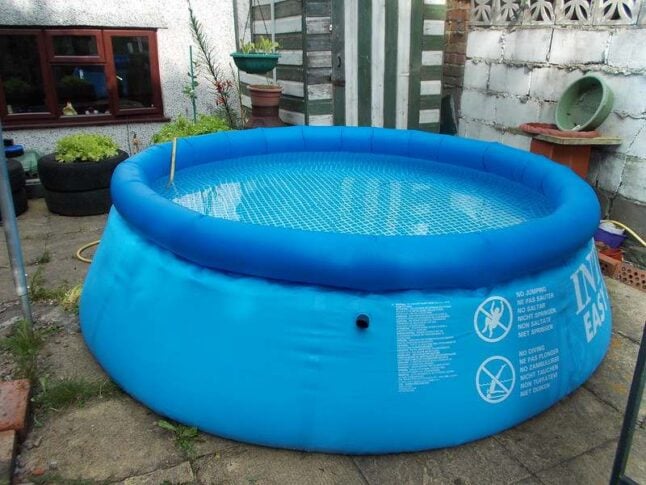
The best advice is to not put the inflatable pool on the grass. It only takes a couple of days for the pool to damage the grass.
In just one day, the grass will show the yellow signs of stress. That’s because the inflatable pool smothers the grass, depriving it of air, water, and sunlight. By day two or three, the lack of those elements will trigger dormancy in the lawn. After about two weeks, the grass will be dead.
Consider placing the inflatable pool on a hard surface, such as driveway, patio, or deck.
Option No. 2
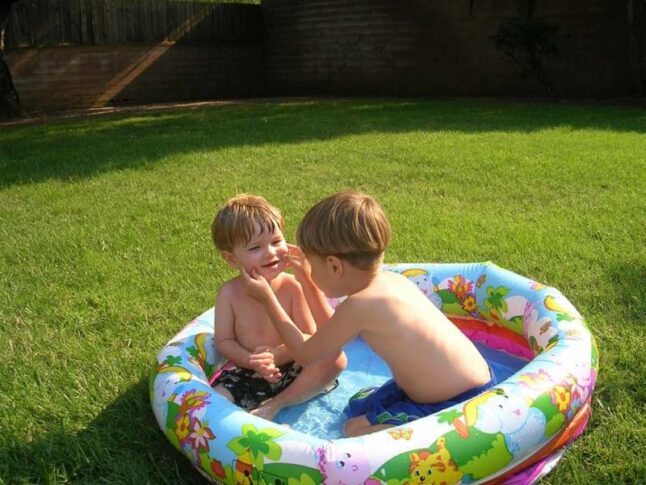
Move the inflatable pool every day or two. This may be easy with a small kiddie pool, but moving a medium or large water-filled pool usually isn’t possible. If you’re using a large kiddie pool, it’s best to avoid the grass altogether. Draining a large pool daily to move it also isn’t sustainable, as it’s a waste of water.
When draining a small kiddie pool, don’t be tempted to dump the water onto your yard. Dumping that much water in your landscape can cause temporary flooding, which may be harmful to grass and other plants. Rather than dumping the pool, use an electric pump that siphons the water through a hose, which can lead to a drain.
What Won’t Protect Your Grass
Myth No. 1: Lay a Ground Cover
In this case, the ground cover isn’t plants, but a plastic tarp instead. Even though some online sources suggest protecting the grass with a ground cover, the tarp’s real role is to protect the bottom of the pool and make walking and sitting in the pool more comfortable. Its function isn’t to protect the grass.
Myth No. 2: Interlocking Tiles
Some interlocking tiles are designed with open spaces to allow for air circulation. These are made of different materials from PVC and other plastics to foam. Placing them underneath the pool might give the grass a chance to breathe, but it won’t solve the sunlight problem. The pool will still block the sunlight and prevent the grass from photosynthesizing.
Myth No. 3: Carpet
Although somewhat breathable, the underside of the carpet may slow water (from splashes, for instance) from draining. Carpet padding is not recommended because it will hold water. Holding water or not allowing it to drain may encourage fungus growth.
Myth No. 4: Sand
Sand may seem like a logical choice, but it is not stable. Sand easily shifts and washes away in rain or windstorms, so it would not stay level underneath the pool.
How to Repair Grass When Swimming Season is Over
Once you remove the summer pool, you may be eager to repair the damaged grass. Here are a few options that can help restore the lawn.
Rehydrate
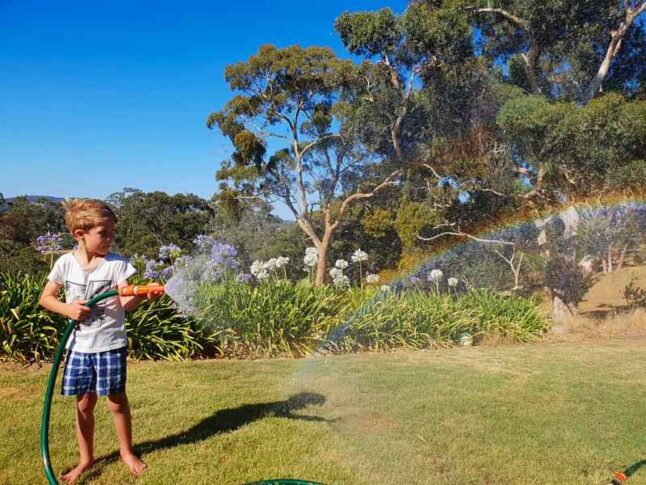
The grass is likely craving water. Water the grass daily if there is no rain. Continue until the grass is thriving again.
Mow to encourage growth
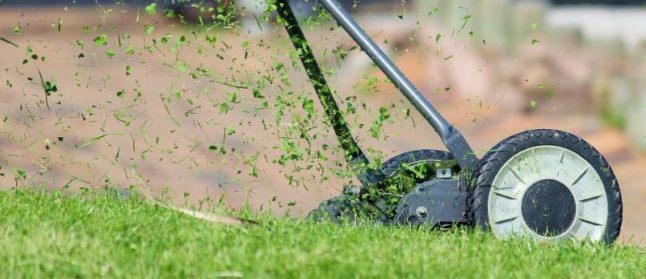
Use a mower to lightly cut or weed whack the area, which will encourage the grass to grow. Allow the grass clippings to remain on the soil–– the organic matter adds trace nutrients to the soil. Hold off on fertilizing until growth has resumed. Read and follow the label directions.
Sow Grass Seed
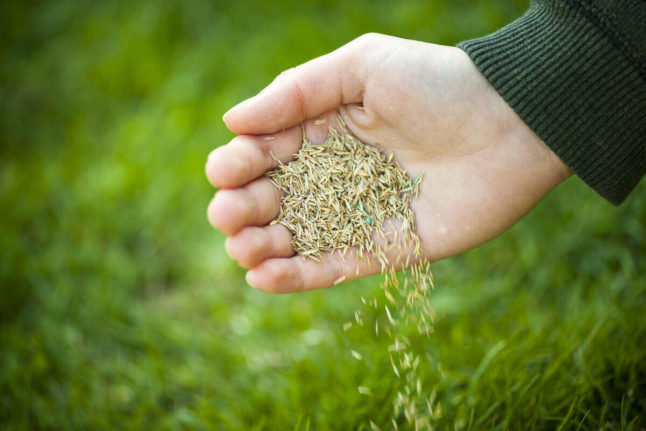
Part of the problem with reseeding an area of dead grass is the season. Warm-season grass, which grows best in warmer climates, ought to be planted in summer. So if you live in a warm climate, consider removing the pool a few weeks before the cold weather hits so that your warm-season grass seed has enough time to germinate.
Cool-season grass grows best in colder climates and ought to be planted in early fall. Aim to plant the grass seed at least 45 days before the first expected frost.
Here’s how to prepare the area for new grass seed:
- Scrape off or dig out the dead grass.
- Apply a 1- or 2-inch layer of compost or compost mixed with topsoil.
- Soak the layer.
- Apply grass seed, according to label directions.
- Water the new planting as recommended on the product label.
- Mow when the grass is about 4 to 6 inches high.
Lay Sod
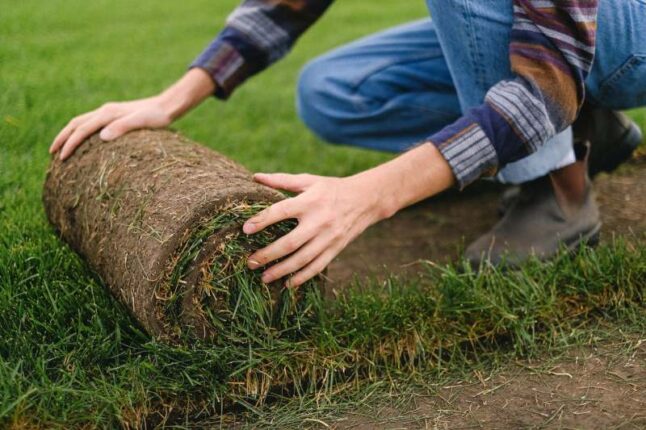
Watching grass grow is like watching paint dry. For instant gratification, try laying sod on the lawn after removing the dead grass and adding compost and topsoil. Keep the sod well watered until established.
Install Something New
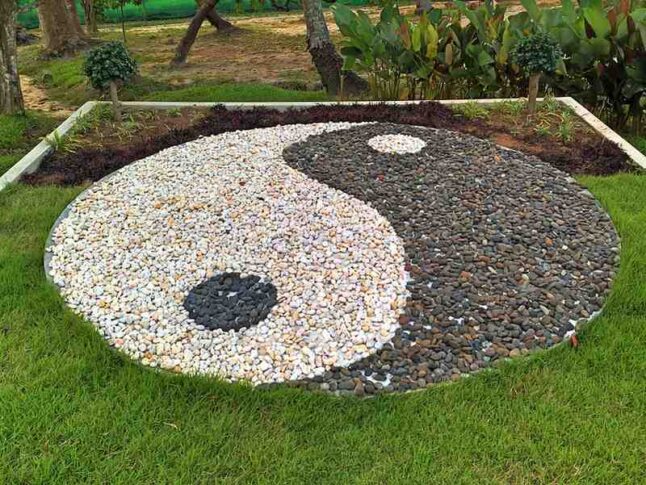
The spot for your inflatable pool doesn’t have to be a grassy area. Consider transforming the space with a fire pit, container garden, or yard game play area. Shredded mulch or artificial turf can make excellent ground covers. When summer arrives and you’re ready to bring out the pool, simply move the containers, fire pit, and games to a new spot.
FAQ About Pools and Grass
Ideally, the ground cover should be about one foot larger than the pool or the same size.
The weight of the pool and water will likely flatten the artificial turf, but you can brush the turf back into shape.
Yes. The concrete (wood or other hard surface) can damage the bottom of the pool. A ground cover will help prevent that.
Tired of lugging out the pool each summer? You might want to consider installing a permanent fixture. Here are the average costs for various pool types:
| Pool Type | Typical Range |
| Above-Ground Pool | $1,698 to $5,969 |
| Semi-Inground Pool | $8,400 to $22,500 |
| Saltwater Pool | $25,375 to $64,060 |
| In-Ground Pool | $32,408 to $60,873 |
Leave the Grass to the Pros
If summer swimming relaxed your stress away, repairing the lawn might be the last thing you want to do. Connect with a local lawn care professional who can revive the sore sight the inflatable pool left behind.
Main Photo Credit: Infrogmation of New Orleans / Wikimedia Commons / CC BY 2.0
